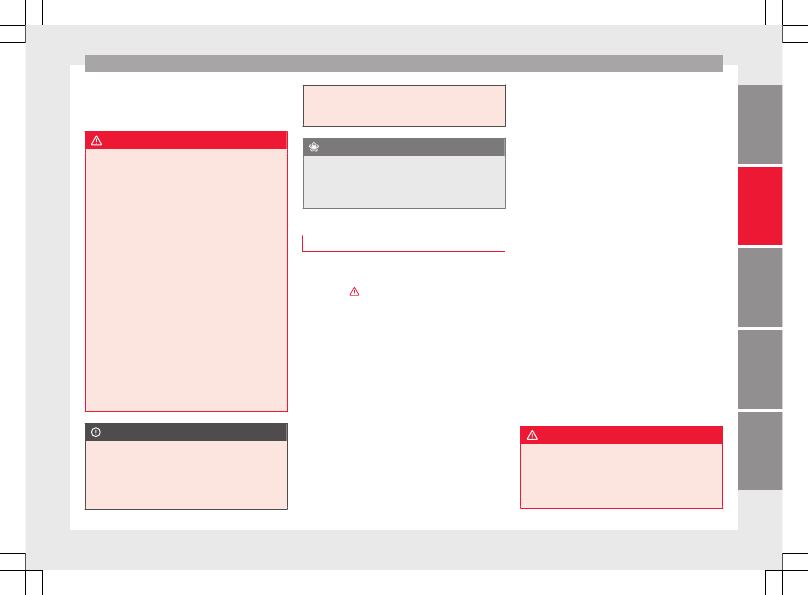Seat Alhambra. Instruction - part 16
-------------------------------------------------------------------------------------------------------------------------------------------------------------

Care and maintenance
consumables should be changed at a speci-
alised workshop. Technical services are per-
manently informed of any modifications.
WARNING
The incorrect use or handling of fluids or con-
sumables may result in accident, serious in-
jury, burns or intoxication.
●
Therefore, fluids must always be stored
closed in their original container.
●
Never store fluids in empty food containers
or bottles as other people may accidentally
drink the fluid.
●
Keep all fluids and consumables out of
reach of children.
●
Read and observe the information and
warnings given on the fluid containers.
●
Only work in the open air or in well-ventila-
ted zones, when using products which give
off harmful vapours.
●
Never use fuel, turpentine, engine oil, ace-
tone or any other volatile liquid in the main-
tenance of the vehicle. These are toxic and
highly flammable. They could lead to fire or
explosions!
CAUTION
●
Only use appropriate fluids. Do not confuse
fluids as this can cause serious malfunctions
or engine damage.
●
Accessories and other components moun-
ted in front of the air inlet reduce the cooling
effect of the coolant. If the engine is running
under great strain in high outside tempera-
tures, it could overheat.
For the sake of the environment
Leaking fluids could pollute the environment.
Collect any spilt fluids in suitable containers
and dispose of them in accordance with legis-
lation and with respect for the environment.
Technical repairs and replacements
When performing repairs and technical mod-
ifications, SEAT's directives must be ob-
served!
›››
Unauthorised modifications to the electronic
components or software in the vehicle may
cause malfunctions. Due to the way the elec-
tronic components are linked together in net-
works, other indirect systems may be affec-
ted by the faults. This may significantly affect
the vehicle's performance, increase compo-
nent wear and could mean that the vehicle
registration documents are no longer valid.
Your technical service centre cannot be held
liable for any damage caused by technical
modifications or repairs performed incorrect-
ly.
The technical service centre does not accept
liability for damage resulting from technical
modifications or repairs performed incorrect-
ly; neither is the SEAT warranty valid in these
cases.
SEAT recommends you have any technical
modifications or repairs performed at a tech-
nical service centre and that you use
genuine
SEAT spare parts
®
.
Vehicles with special accessories and equip-
ment
The manufacturers of additional equipment
guarantee that the equipment complies with
applicable laws and regulations with respect
to the environment, in particular Directives
2000/53/CE and 2003/11/CE. The first direc-
tive governs the disposal of end-of-life vehi-
cles while the second refers to the restric-
tions on the marketing and use of certain
dangerous substances and preparations.
The vehicle owner should keep the documen-
tation for the additional equipment safely
and hand it over to the scrap yard at the end
of the vehicle's service life. This ensures that
any additional equipment mounted in end-of-
life vehicles is correctly disposed of with re-
spect for the environment.
WARNING
Repairs or modifications which are not per-
formed correctly may result in damage or er-
rors in the vehicle operation, affecting the ef-
fectiveness of the driver assist systems. This
could result in serious accident.
»
245